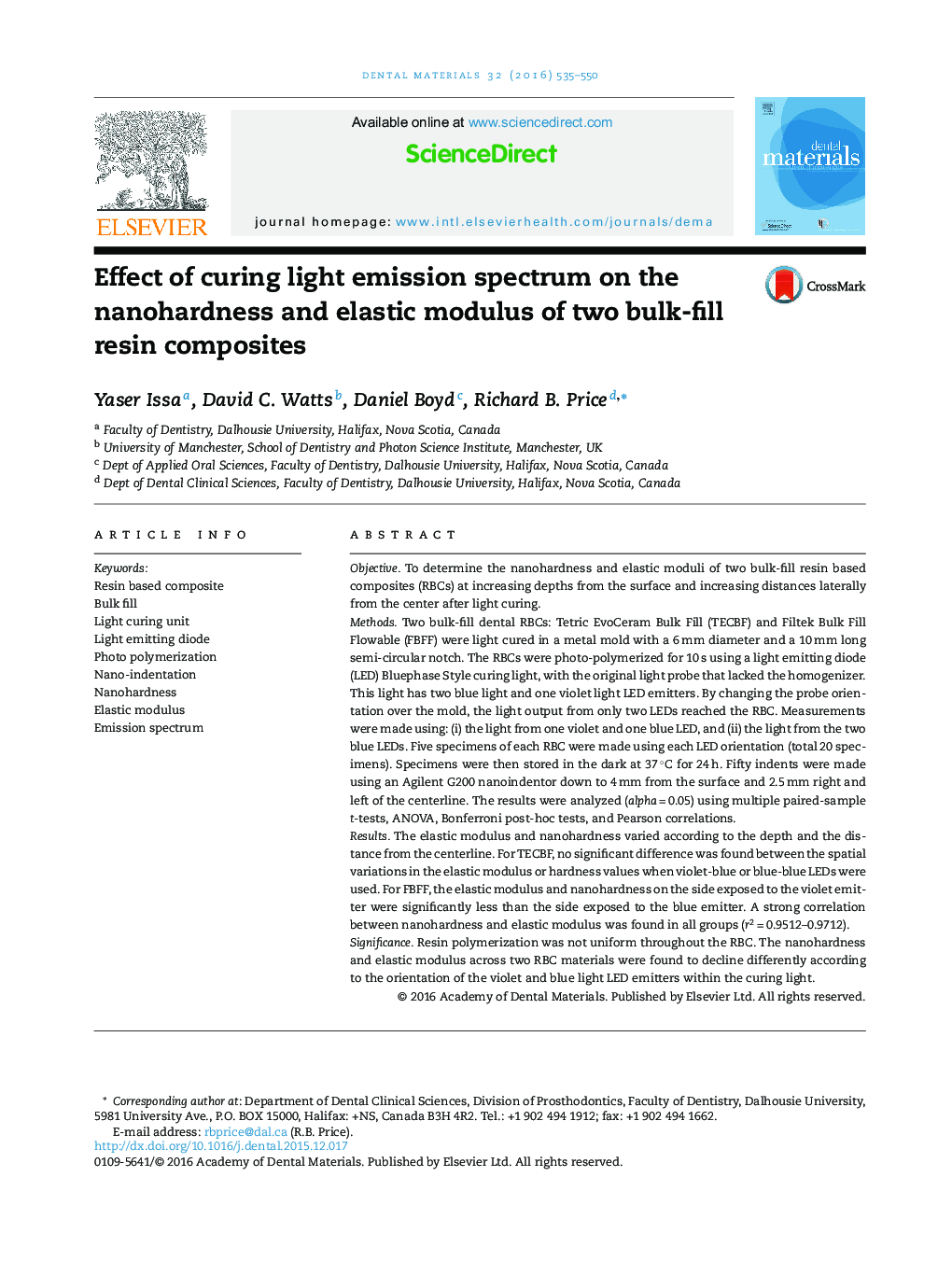| کد مقاله | کد نشریه | سال انتشار | مقاله انگلیسی | نسخه تمام متن |
|---|---|---|---|---|
| 1420499 | 986367 | 2016 | 16 صفحه PDF | دانلود رایگان |
ObjectiveTo determine the nanohardness and elastic moduli of two bulk-fill resin based composites (RBCs) at increasing depths from the surface and increasing distances laterally from the center after light curing.MethodsTwo bulk-fill dental RBCs: Tetric EvoCeram Bulk Fill (TECBF) and Filtek Bulk Fill Flowable (FBFF) were light cured in a metal mold with a 6 mm diameter and a 10 mm long semi-circular notch. The RBCs were photo-polymerized for 10 s using a light emitting diode (LED) Bluephase Style curing light, with the original light probe that lacked the homogenizer. This light has two blue light and one violet light LED emitters. By changing the probe orientation over the mold, the light output from only two LEDs reached the RBC. Measurements were made using: (i) the light from one violet and one blue LED, and (ii) the light from the two blue LEDs. Five specimens of each RBC were made using each LED orientation (total 20 specimens). Specimens were then stored in the dark at 37 °C for 24 h. Fifty indents were made using an Agilent G200 nanoindentor down to 4 mm from the surface and 2.5 mm right and left of the centerline. The results were analyzed (alpha = 0.05) using multiple paired-sample t-tests, ANOVA, Bonferroni post-hoc tests, and Pearson correlations.ResultsThe elastic modulus and nanohardness varied according to the depth and the distance from the centerline. For TECBF, no significant difference was found between the spatial variations in the elastic modulus or hardness values when violet-blue or blue-blue LEDs were used. For FBFF, the elastic modulus and nanohardness on the side exposed to the violet emitter were significantly less than the side exposed to the blue emitter. A strong correlation between nanohardness and elastic modulus was found in all groups (r2 = 0.9512–0.9712).SignificanceResin polymerization was not uniform throughout the RBC. The nanohardness and elastic modulus across two RBC materials were found to decline differently according to the orientation of the violet and blue light LED emitters within the curing light.
Journal: Dental Materials - Volume 32, Issue 4, April 2016, Pages 535–550
